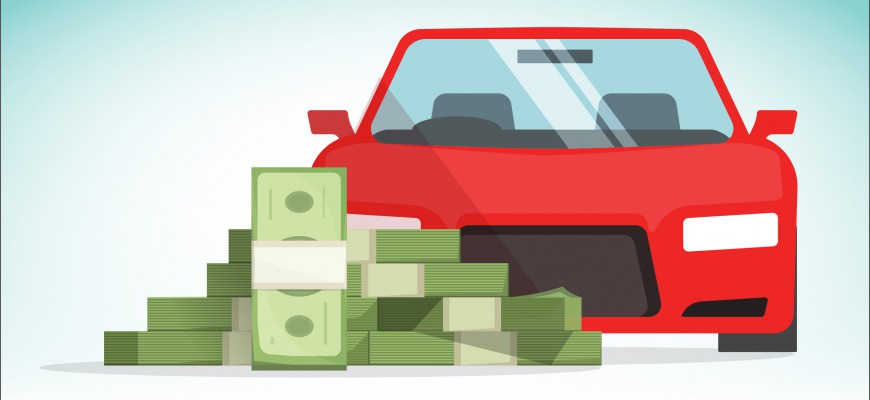Transportation Calculation: Adding Up the Cost of Auto Expenses
There are a lot of factors that go into how much you’ll pay over time for your car. Between gas, insurance, repairs and the cost of the car itself, your auto-related expenses will add up.
In fact, according to the Bureau of Labor Statistics, transportation costs totaled an average of $9,503 in 2015, the second-largest expense for the typical American after the cost of housing. Between 2014 and 2015, the average cost of transportation increased nearly 5 percent, with the cost of vehicles increasing 21.1 percent.
But depending on where you live, you may not feel the financial impact as strongly. Regional differences in the price of gas and varying insurance requirements between states, among other factors, play a large role in how expensive owning a car is.
Regional References
According to the Energy Information Administration, the average price of a gallon of gas came to $2.245 during the week ending Oct. 3, 2016. This is 7.3 cents more affordable compared to the same week a year earlier, as is consistent with recent trends. The falling price of oil, though harmful to the oil and petroleum industries, has benefited consumers through highly affordable fuel.
Though the price of gas is relatively cheap throughout the nation, there are some areas that have been enjoying the lowest of low prices. The Gulf Coast has consistently had the lowest prices for more than a year, specifically in the Greater Houston area.
“The Gulf Coast consistently has the lowest gas prices.”
Conversely, the West Coast has experienced the highest prices for about the same period of time; San Francisco and Los Angeles in particular have some of the highest gas prices in the nation.
While the price of gas is at least a weekly concern for drivers, the cost of insurance is also a big factor in how much owning a car will cost. According to Insure.com, there are some major differences between states in regards to how much insurance will cost. It somewhat depends on states’ rules in terms of how much insurance and which insurance products are required for drivers, as well as other factors such as accident rates and the number of auto and medical fraud cases in the state.
Michiganders are subjected to the highest insurance prices by nearly $450. The average cost to insure your vehicle in the Great Lakes State is $2,738, compared to the national mean at $1,325. The state requires all drivers to have personal PIP insurance that includes unlimited medical benefits as part of its no-fault policy. Medical claims must also be covered up to $530,000, plus an annual fee to the Michigan Catastrophic Claim Association. In 2016, this fee was $150.
On the other side of the spectrum, Maine comes in as the state with the lowest price of insurance for the second year in a row, according to Insure.com. The average insurance premium was just $807. This is due to a number of factors. First, most Mainers don’t skip out on insurance–about 95 percent of drivers have insurance, the second-highest state in the nation. When everyone follows insurance laws like this, prices drop. But it’s not just the general population’s actions that help. Maine isn’t exactly known for its big cities, which works in its favor. With fewer high-density areas, accident rates are lower than in states that have major metropolises. Also, though Maine will experience some pretty bad snowstorms every year, there are few other natural disasters that pose a threat to cars–few tornadoes or hailstorms make their way to this northern state.
Most Affordable States
Though the factors seem right for Texas or Maine to be the most inexpensive states in which to own a car, neither make the list of top three. Instead, a combination of regional price differences as well as driver habits give the following three states the top spots for most affordable states for car owners.
No. 1: Ohio
According to 24/7 Wall St., Ohioans have the lowest expenses overall. Even though the average cost of gas isn’t notably cheap–$2.67, the 20th-lowest in the country–low insurance costs pull the price of transportation down considerably. The typical insurance premium is just $900, the second-lowest in the country.
No. 2: Hawaii
Next on 24/7’s list is a state in which residents perhaps have the least need for a vehicle, and this is precisely why owning a car is so inexpensive here. In Hawaii, the average price of gas is $3.31, the third-highest in the nation. However, the average Hawaiian drives more than 2,000 miles less than the typical American, bringing their gas expenditures significantly down.
No. 3: Idaho
Even though Idaho gas stations boast the eighth-highest gas prices in the country at $2.92 on average, most Idahoans only use about 407 gallons of gas every year. Compared to the U.S. average of 528 gallons, these drivers are spending considerably less annually than other American drivers. Combine that with the fourth-lowest insurance premiums at $935, Idaho drivers aren’t shelling out much money for their transportation needs.







Hi, I am buying a used van from Florida, it is a 2003 Chrysler. I will be driving it in Ontario. Does it need to be e-tested? If so when? Does it need to be tested on the day of the car owners birthday or one year after being purchased? Need to know ASAP. Thanks in advance to all those that can help!
Hello Noah,
That is an excellent question! I apologize in advance if there is a misunderstanding my part, however I will go ahead and assume that you are referring to Ontario, Canada.
Unfortunately, I would not be able to provide a direct answer to your question; however, I was able to locate a government website that might be able to help you gain some insight on this matter.
https://www.ontario.ca/page/drive-clean
I hope this helps! Have yourself a wonderful day!
Jacob – Customer Relations